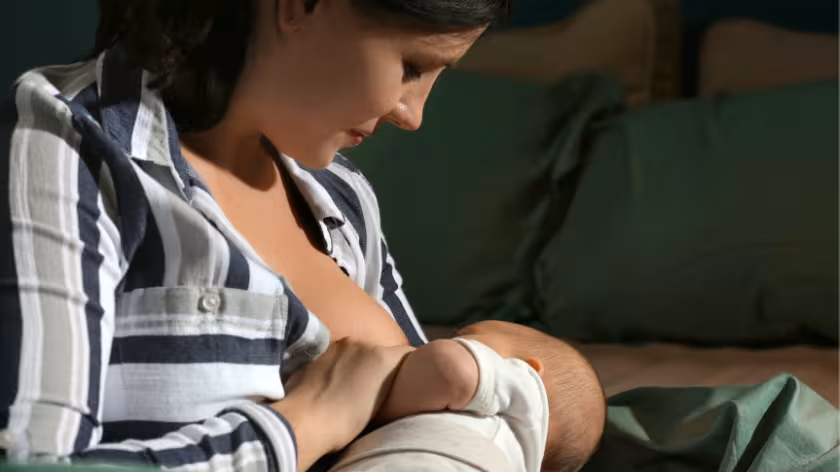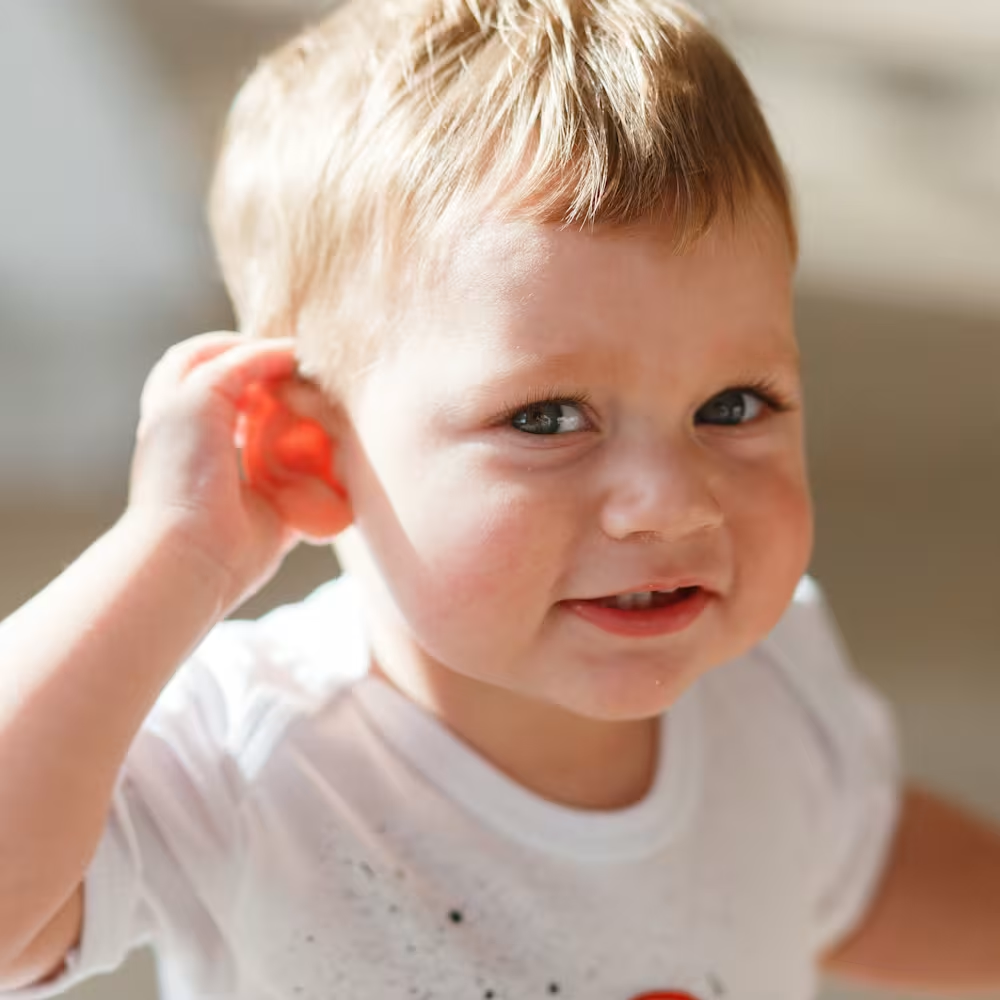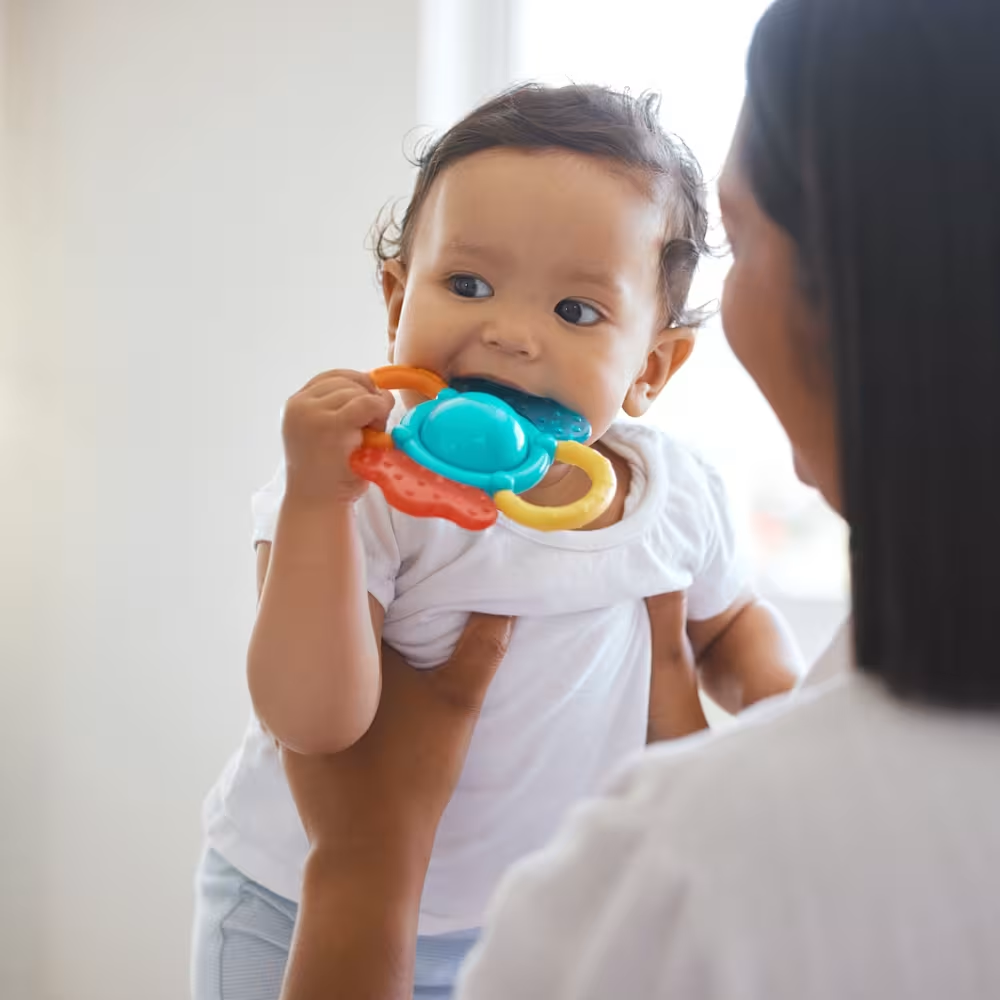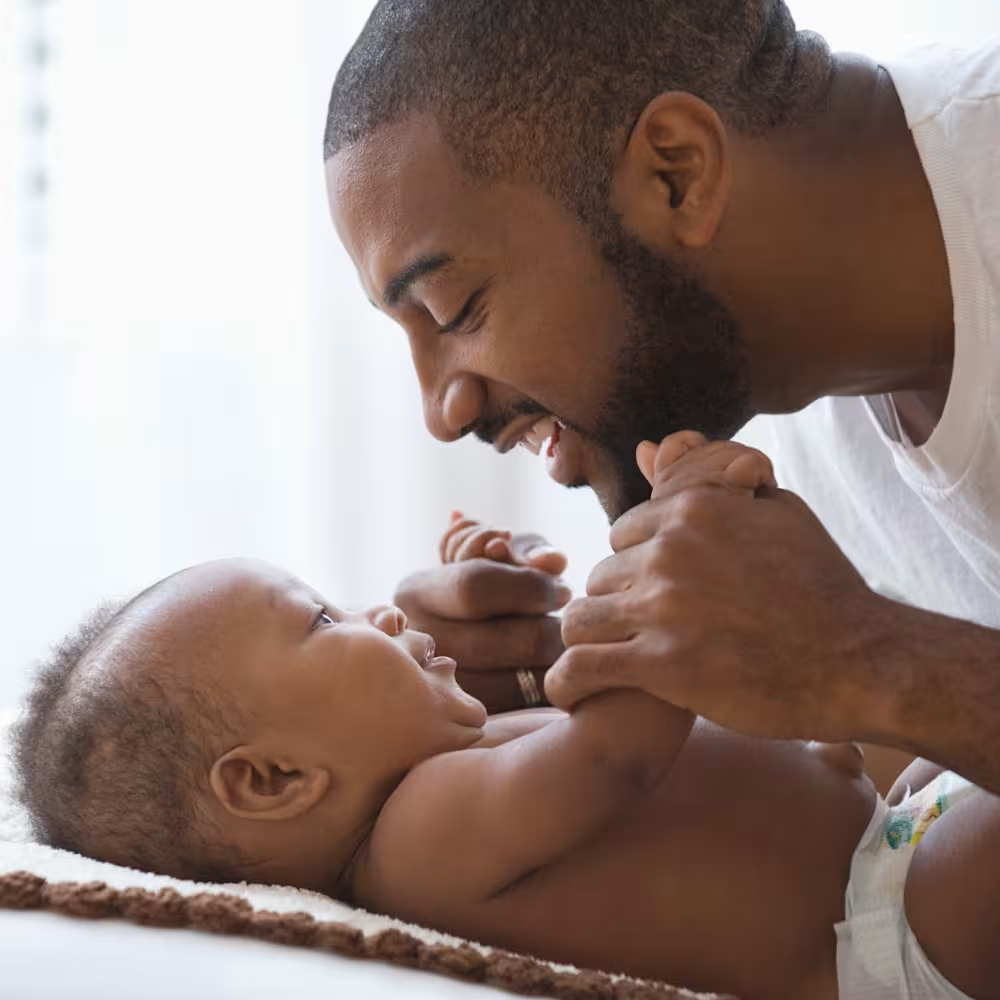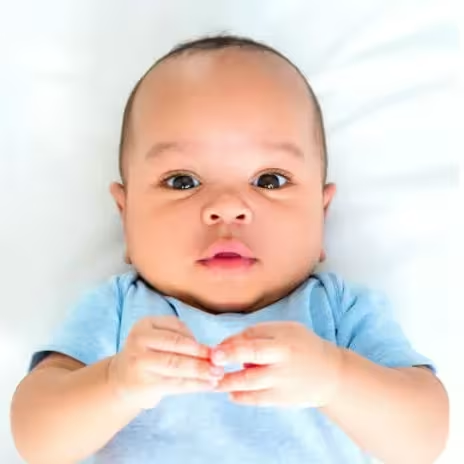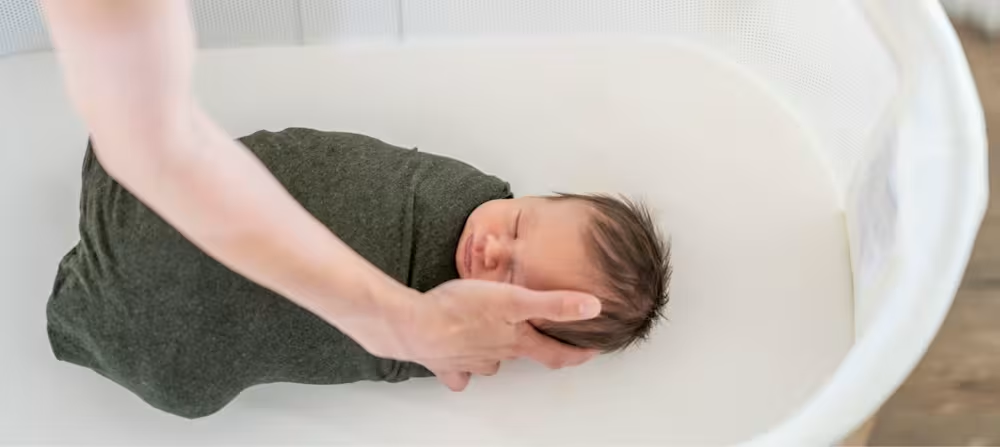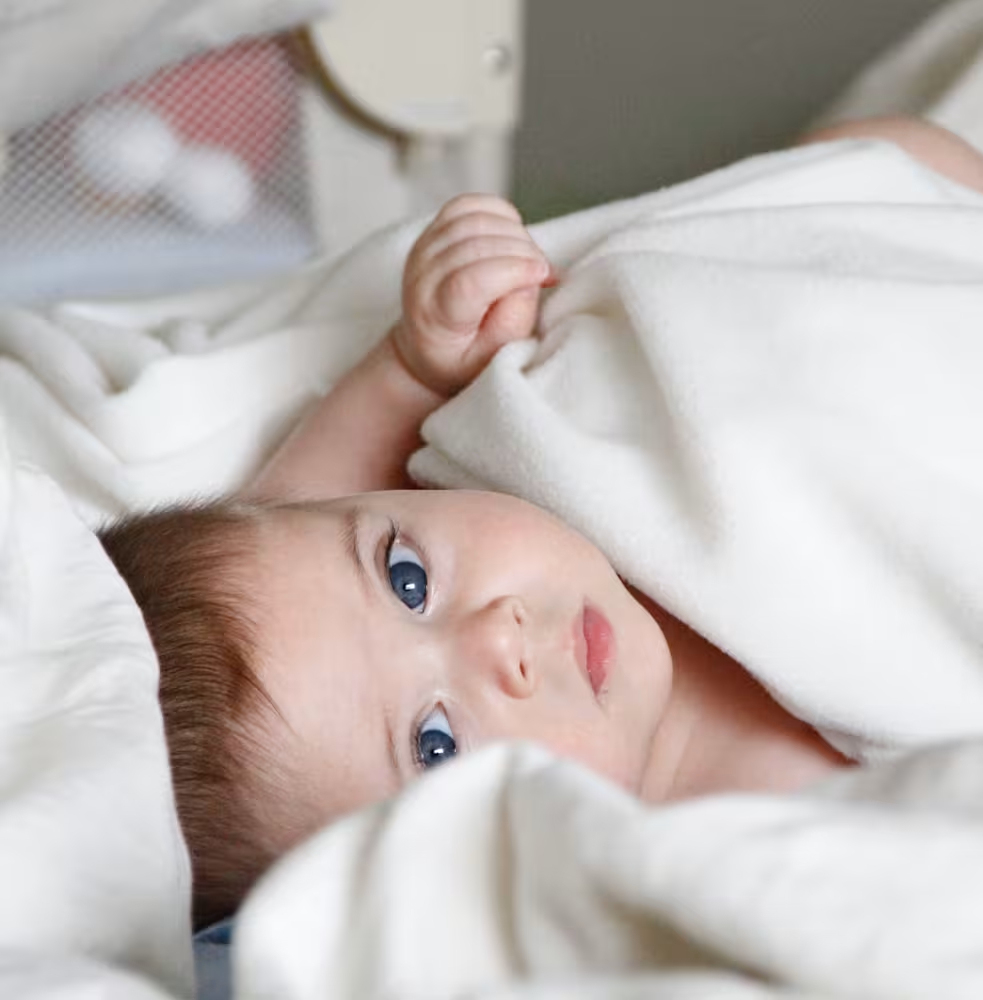How to dress a baby for sleep: Safe and cozy tips for every season
Updated Oct 16, 2025

Dressing your baby for sleep might seem simple until you’re staring at the monitor at 2 AM wondering if your little one is too hot, too cold, or just right. With so much advice floating around, it’s easy to feel unsure about whether you’ve nailed the nighttime outfit or need to make a late-night pajama swap.
In this article, we’ll walk you through everything you need to know. From ideal room temperatures to safe sleepwear layers, we’re going to prepare you to dress your baby for sleep in every season. Whether you’re swaddling a newborn or zipping an older baby into a sleep sack, we’ve got you (and your baby) appropriately covered.
Table of Contents
Why dressing baby for sleep matters
Babies aren’t great at regulating their body temperature yet, especially in the early months — which means they rely on you to help keep things comfortable. What your baby wears to sleep can affect both how well they rest and how safely they sleep. Overheating is a known risk factor for sudden infant death syndrome (SIDS), while dressing too lightly in a chilly room can lead to restless nights []. The good news? Luckily, it’s easier than you might think to get it right.
The key is learning to read your baby’s cues and match their sleepwear to the environment. Things like room temperature, season, and even your before bedtime can all influence what they need to wear. With a little practice, you’ll be able to confidently choose outfits that help your baby stay cozy, sleep longer, and wake up well-rested.
The basics of how to dress infants for bed
Finding the right balance doesn’t have to be complicated. And it doesn’t require a closet full of high-tech baby gear, either.
Here’s an overview of the basics to follow. (More details below!)
Dress your baby in one more layer than you would wear to sleep.
Don’t add loose layers of clothing.
No need for hats.
Focus on breathable materials.
Keep the room temperature consistent.
Dressing newborns: What’s different in the first few weeks?
Newborns need a little extra help staying warm, especially in the first few weeks after birth. Unlike older babies, they can’t regulate their body temperature well yet. That’s because they lose heat quickly due to having more surface area compared to their tiny bodies []. They also burn through energy reserves just trying to stay warm [].
At home, this means you’ll want to be mindful of room temperature and layering. Skin-to-skin contact is one of the best ways to stabilize a newborn’s temperature.
Your newborn will become better at regulating their temperature over time. But in those early weeks, a little extra warmth (without overheating) goes a long way.
What is the best temperature for baby to sleep in?
When it comes to helping your baby sleep comfortably, temperature can play a role. Studies show the ideal for infant sleep is between 68° and 72°F (20 - 22°C). This range helps support safe sleep and can reduce the risk of overheating, which is a known risk factor for SIDS.
But here’s the catch: that number only covers the room itself — not what your baby is wearing to bed. Think of it like dressing yourself for sleep: you wouldn’t wear flannel pajamas under a heavy comforter in the middle of summer. Similarly, it’s important to layer your baby appropriately based on the room temperature.
That said, keeping your baby’s room in this exact range isn’t always realistic depending on where you live, the season, or if you have reliable air conditioning or heating. If the room tends to run warmer or cooler, aim to adjust sleepwear layers accordingly and use safe cooling options like a fan (placed away from the crib and not blowing directly on your baby). The goal is to help your baby stay comfortably cool — not sweaty or chilly.
Why layering matters when using swaddles and sleep sacks
and sleep sacks are great tools for helping babies feel secure while they sleep, but what goes underneath them matters too. Layering helps regulate your baby’s body temperature, which is especially important since newborn babies can’t easily warm themselves up or cool themselves down []
as the outer layer — not the whole outfit. Depending on the room temperature, you may want to dress your baby in a short- or long-sleeve onesie, or even a footed sleeper underneath, depending on the season. During the hot summer, a light sleep sack and a diaper may be enough! The goal is to find the combination that keeps them comfortable without overheating.
Layering gives you flexibility, which means you can make small adjustments as the seasons (or your thermostat settings) change without needing an entirely new sleep wardrobe.
Dressing baby for sleep by room temperature and season
What TOG should baby sleep in?
TOG stands for Thermal Overall Grade — basically, it’s a measurement of how warm a fabric keeps you. You’ll often see it on baby sleep sacks, swaddles, and wearable blankets. The higher the TOG, the warmer the item. (For example .5 TOG indicates a very light material, whereas a 2.5 TOG will be much warmer.)
TOG ratings are helpful because they take the guesswork out of dressing your baby for sleep. Instead of piling on layers and hoping for the best, you can choose sleepwear with a TOG that matches your room temperature.
TOG | Description | Suggested clothing |
|---|---|---|
0.5 TOG | Ideal for warmer temperatures | Short-sleeve onesie or PJs, diaper only if very warm |
1.0 TOG | Best for mild temperatures year-round | Long-sleeve or short-sleeve onesie or full PJs, depending on room temperature |
2.5 TOG | Suitable for cooler sleep environments | Footed PJs |
3.5 TOG | Use in cold environments | Layer as necessary for room temperature |
How to tell if your baby is too hot or too cold while sleeping
Babies can’t exactly tell us when they’re uncomfortable, but their bodies give us clues. Learning to spot signs that your baby is too warm or too chilly at night can help you create a safer sleep environment (and maybe even earn a few extra ZZZs yourself).
While every baby is a little different, here are some things to look for:
4 signs your baby may be overheating
Overheating during sleep is something to keep an eye on for safety and comfort. Here are some common red flags:
Sweaty neck, back, or hairline: A damp neck or sweaty scalp is often the first sign your baby is too hot.
Flushed cheeks or skin that feels hot to the touch: If your baby’s skin is red, especially on the chest or face, it may be time to remove a layer or lower the room temp.
Rapid breathing or restlessness: Discomfort from overheating can make your baby fussier or interrupt their sleep cycle. If baby has a bluish tint or is breathing faster than 60 breaths per minute, you should contact your pediatrician [].
Heat rash: These tiny red bumps often show up on the neck, chest, or back to indicate your baby is too warm at night. It’s best to reach out to your child’s doctor if the rash is worsening, if a fever occurs, or if signs of infection appear (pus or blisters) [].
4 signs your baby may be too cold
While it’s less common than overheating, being too cold can still disrupt your baby’s sleep (and leave you second-guessing your swaddle skills). This might look like:
Cool chest, neck, or back: Hands and feet are often cool in babies and aren’t reliable indicators that they’re too cold. Instead, lay the back of your hand on their chest, back, or neck.
Shivering: It’s rare in newborns [], but if your older baby is shivering, it’s a sign they need another layer.
Waking more frequently: If your baby is waking up more often than usual, it could be a sign they’re not cozy enough to stay asleep. However, it’s just as likely — if not more so — that the waking is caused by something more common, like hunger, a sleep association, or changes in their routine or development. It’s always a good idea to rule out discomfort, but frequent night wakings are a normal part of baby sleep and often tied to broader patterns.
Pale or bluish skin tone: A bluish color on lips or extremities may indicate they’re too cold and need warming up. If warming doesn’t quickly improve their color, or if they seem lethargic and hard to wake, contact your pediatrician or seek medical attention immediately.
How to dress baby for sleep in winter
When the temperature drops, it’s natural to want to bundle your baby up. But when it comes to sleep, less is often more. The goal is to keep your baby warm without tipping into too-hot territory. A few thoughtful layers and some cozy (but breathable!) materials allow your baby to sleep snugly all winter long.
Here are some tips for dressing your baby for winter sleep:
Start with a breathable base layer. A cotton or bamboo long-sleeve onesie or footed sleeper is a great foundation.
Add a sleep sack or swaddle. Choose a warmer sleep sack made of breathable fabric like cotton or wool. Avoid fleece sacks if the room is already warm.
Avoid loose blankets, hats, or heavy bedding. These increase the risk of suffocation and overheating. Stick to fitted layers and safe sleep surfaces.
Feel the back of your baby’s neck. If it’s sweaty or hot, remove a layer. If it’s cool, you can add one.
Trust your instincts (and your thermostat). If you feel chilly in the room with one layer and a comforter, your baby likely needs a base layer and a warm sleep sack to match.
Remember, it’s safer to be slightly cool than too warm during sleep. Aim for cozy rather than bundled, and always choose breathable fabrics over bulky ones like wool.
How to dress baby for sleep in summer
When summer hits, even bedtime can feel a little sticky. Babies heat up faster than we do, so it’s essential to prioritize breathability and minimal layering during warmer months.
Here’s how to keep your baby cool and comfortable all summer long:
Stick to light, breathable fabrics. Cotton or bamboo are great choices for hot nights. Avoid fleece, polyester, or anything heavy or synthetic.
Choose minimal layers. In a warm room, a short-sleeve onesie or even just a diaper with a lightweight muslin is usually enough.
Skip hats, socks, or mittens. These trap heat and aren’t recommended for sleep, especially in the summer.
Keep the room as cool as possible. Use a fan to improve airflow (just not pointed directly at baby), and close curtains during the day to block out heat.
Do the neck check. Feel the back of your baby’s neck or chest to assess warmth. If they’re sweaty or flushed, remove a layer or try lighter sleepwear.
When in doubt, simpler is safer in summer. If you're unsure what to put on your baby during a summer night, lean toward the lighter side. A cooler baby is more likely to be more comfortable.
Safe sleep guidelines to keep in mind
According to the American Academy of Pediatrics (AAP) [], these can significantly lower the risk of SIDS and other sleep-related dangers.
These guidelines are rooted in the latest safety research, but we know parenting decisions aren’t made in a vacuum. Cultural values, personal history, and mental health all shape how you choose to care for your baby — and that matters. Our goal is to provide trustworthy information so you can make choices that feel safe and sustainable for your family.
Back to sleep
Back-sleeping is the safest position and helps reduce the risk of SIDS. If your baby rolls over on their own and can roll both ways, you can leave them in that position. When you put them to bed at the start of the night, the AAP recommends putting them on their back, alone, and not or stomach.
Firm, flat, bare surface
Cribs, bassinets, and play yards that meet current safety standards are best. The surface should be firm, flat, and free of loose items like blankets, pillows, bumpers or stuffed animals. A tightly fitted sheet is all you need. This simple setup lowers the risk of suffocation and keeps your baby’s sleep space safe. Avoid inclined sleepers, baby loungers, swings, or car seats for routine sleep.
Avoid overheating
Dress your baby in one more layer than you would wear to sleep. Keep the room at a comfortable temperature—typically between 68–72°F (20–22°C). Depending on where you live and the time of year, what feels comfortable can vary. In warmer climates, you might need a fan or air conditioning, while cooler regions may require heating. The goal is to avoid overheating or chilling — your baby should feel warm, but not sweaty or hot to the touch.
Avoid weighted blankets and products
Avoid weighted blankets and weighted swaddles, as they can pose safety risks for babies. These products may restrict movement or make it harder for a baby to wake themselves if something is wrong. Current safe sleep guidelines recommend avoiding any sleep products that add weight to a baby’s chest or body.
Takeaway
Dressing your baby for sleep is about safety and comfort. Babies can’t regulate their body temperature well, so what they wear to bed plays a role in reducing the risk of overheating and supporting better sleep.
Layer thoughtfully, not heavily. Dress your baby in one more layer than you’d wear to sleep in the same room. Stick with breathable materials and skip hats or loose extras.
Room temperature matters. Aim to keep the room between 68° and 72°F if possible. Use layers to match the environment (not just the season) and adjust based on how your baby feels at the neck or chest.
Know the signs of being too hot or too cold. Sweat, flushed skin, or heat rash can signal overheating. Cool skin, shivering, or frequent waking may mean your baby is too cold and needs another layer.
Every family is different — and that’s OK. These guidelines are based on research, but we respect that every parent makes sleep decisions based on values and real-life needs.
Dressing baby for sleep FAQ
Share article:
Note: The content on this site is for informational purposes only and should not replace medical advice from your doctor, pediatrician, or medical professional. If you have questions or concerns, you should contact a medical professional.
10 Sources
Table of Contents
Share article:
